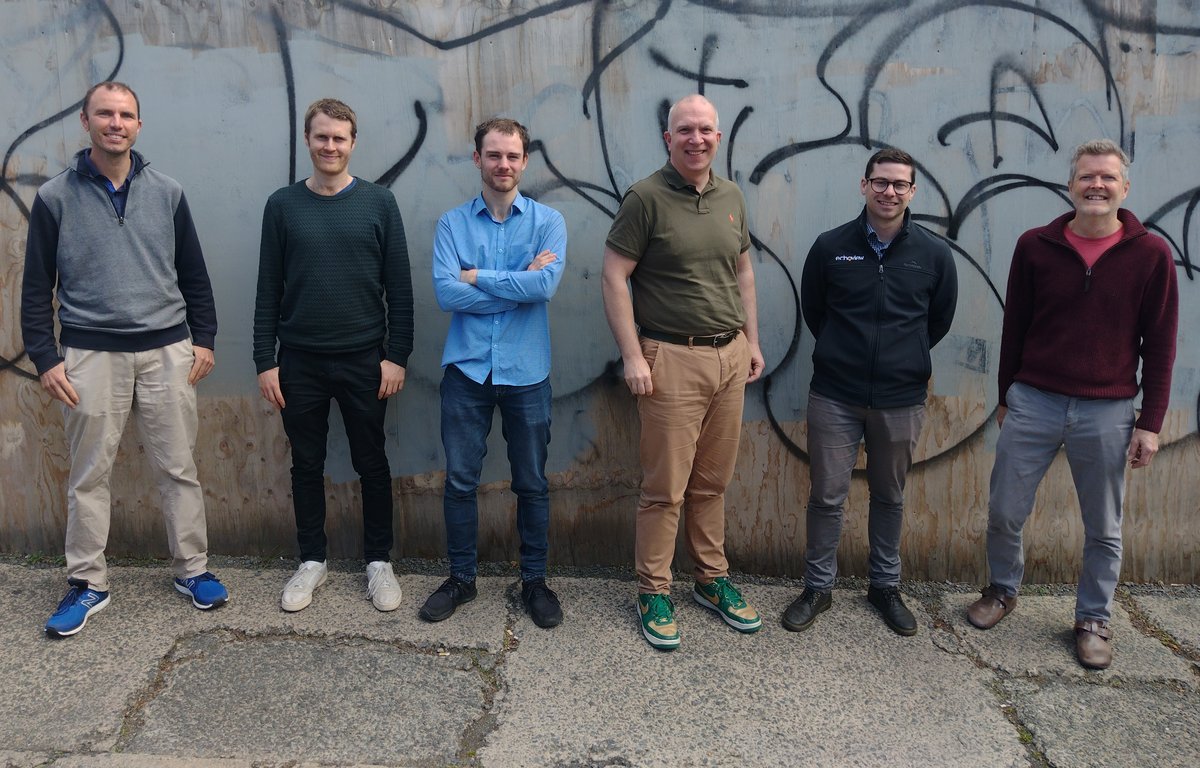Echoview 13 is here and we are thrilled to launch our biggest and most advanced release ever, demonstrating our commitment to ongoing collaboration and consultation with users, industry, and partners to ensure your Echoview experience is faster, easier, and more intuitive.
As part of the release, we are pleased to shine a light on the skills and knowledge of the diverse in-house team responsible for the ongoing development of Echoview: our programming team.
This team comprises the “super six” who bring their varied skillsets across programming, design, applied mathematics and machine learning to support the ongoing innovation of Echoview and ensure our user’s needs are continuously met.
We sat down with Development Manager, Geoff Matt, and Software Architect, Charles Weld, to find out more about their team.
Q) What do your roles involve?
Geoff: My role is to manage the programming and quality assurance teams for Echoview. I oversee who is adding which new features, and make sure everything is being done to schedule and design specifications.
Charles: As Architect Lead my role is to support the team regarding technical decisions. I work closely with Geoff our team lead and help resolve ‘How do we solve x’, whereas he’s more the ‘What’ and ‘When’.

Q) What are the responsibilities of the programming team?
Geoff: The programming team code all the applications within the Echoview product suite. They’re responsible for taking a user request and designing a workable solution for it within our software. Then they have to implement the solution and prove it works!
Generally this involves a lot of investigation, including researching technical documents and scientific journal papers, contacting customers and sonar manufacturers, so we can build a rigorous understanding of the science we intend to utilize. This then needs to be coded so that the functionality is made available in a system that can scale to large volumes of data from over 75 different echosounders.
Q) How do you create a new feature?
Geoff: We start by looking at the problem our users are trying to solve. This can be exceptionally varied with our customers working across a range of industries including marine, rivers and lakes, aquaculture, environmental assessment and monitoring, commercial fishing and aquaculture. It’s super important that we come at the task from the user angle, so we can create a solution that will be valuable to them, rather than creating a cool piece of tech that isn’t actually needed. That process involves several people, including the programmers, the Quality Assurance (QA) team and Support team. Again, this is all focused on making sure the solution we put in place will solve the user’s underlying problem. From that point we code the solution into Echoview’s product suite, after which the functionality is checked against the original requirement by our rigorous QA team!

Q) What is one of your favorite features in Echoview 13?
Geoff: I am very proud of our machine learning operators. This has been a very ambitious project for us, where we were truly stepping into the unknown. There was a point when we thought we might have bitten off more than we could chew, and we had to turn to cutting edge academic research in order to find a solution to our unique problem. Almost everyone in the programming team have had a hand in creating this and we’re all very excited about its release to our user base.
Charles: I’m in agreement with Geoff in that machine learning operators are one of the more exciting projects we’ve undertaken for a while. For me it’s more about the possibilities these approaches open up, especially regarding school detection and classification. It’s going to be very interesting to see where we and the community take this!
Q) How much of the job is programming and how much is problem solving?
Geoff: Most of our job is problem solving! I think it’s common to think that programmers are always furiously typing at 100 words a minute, but the reality is that we spend way more time scribbling on white boards and looking at scientific equations. Really that’s the role that we serve as engineers, we solve problems, and you can’t program anything until you have the solution worked out.
Q) Describe a day in the life of your team?
Geoff: The team all have allocated, prioritized tasks which we are working through. Once we have each started on our current task, there will normally be quite a lot of conversation in the room about how a certain piece of functionality works, or whether a new feature works exactly as we need it to. I always like to explain that, although we are a bunch of scientists and programmers, we definitely don’t sit in silence for 8 hours writing code. It’s a very collaborative process, where everyone is involved and has input.

Q) What do you like about working with the Echoview Software team?
Geoff: The team is incredibly friendly and supportive of each other, which makes it a genuinely nice office to work in. On top of that I feel like everyone’s voice is heard, so if someone has a good idea then we implement it. It doesn’t matter if that person was a junior staff member, or a senior manager, and I think that’s very empowering.
Charles: Like Geoff I love the team environment, everyone is very supportive and open to discussion. This helps make Echoview Software a great environment to work in. I also appreciate working within a more technical domain which involves some real science and technical challenges which can be lacking in other domains.


